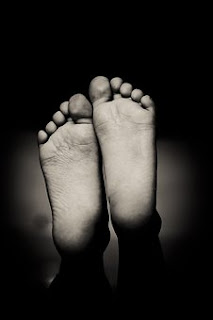Sometimes you can feel a bit stressed and under the weather, but it isn't always convenient to have a lie down. While giving your feet a massage is very beneficial it isn't always practical to do this, so it is good to know about some alternatives you can try. Our hands are amazing things and I have been getting some pain in my right hand, which apparently would indicate my intestinal area. This is very interesting to a sufferer of IBS. However it got me thinking about the benefits of giving our hands a massage and how this can help.
A pressure point, which can be a sensitive area of tendons,
muscles, ligaments, or simply a nerve cluster, is often utilized in
therapies by masseuses. Shiatsu and acupressure both focus on these
pressure points in your body to treat certain ailments. Your hands play
an important role in pointing therapy, as there are many acupressure
points in the hand. These points have direct connections to different
organs of your body, which means you can stimulate these pressure points
to alleviate pain in different body organs. Keep reading to learn more
about different acupressure points in hand.How Many Acupressure Points in Hand?
According to Chinese studies, your body has 340 known pressure points, 28 of which are in your hand. You can identify those pressure points and massage them to enjoy amazing benefits that pressure therapy has to offer. In case you don't know much about different acupressure points in your hand, you can simply rub your palms together until hot. This will help stimulate different points in your hand, but the following contents will tell you more about some specific pressure points that help treat different ailments.5 Main Acupressure Points in Hand for Self Treatment
As mentioned already, different acupressure points in your hand will offer different benefits. Here's a bit more about specific points that are connected to specific body organs.1. Hand Valley Point
It's among the most popular acupressure points used to heal different problems in your body. Situated between your pointer finger and thumb, this acupressure point helps you get rid of stress, migraines, headaches, shoulder tension, toothache, constipation and neck pain. Stimulating this point will also help remove excess heat from your body.2. Base of Thumb Point
It is also one of the popular acupressure points in hand for self-treatment. You can find this acupressure point right at the base of your thumb just about your wrist. Locate this point and apply firm pressure using the thumb of your other hand. Regular stimulation of this pressure point will help you find relief from coughing and breathing problems.3. Wrist Point 1
If you always find yourself under stress and want a simple yet effective remedy, you should consider stimulating wrist point 1. It works effectively to relieve stress. Many people use this point for self-treatment and often get amazing benefits. This wrist point is located on your wrist and is in line up with your little finger. Once you locate it, apply firm pressure on this point for some time regularly. Stimulating this point will alleviate stress and improve your emotional state as well.4. Inner Gate Point
If you wonder how you can treat your nausea, here's a great solution. Locate inner gate point, massage it, and relieve nausea. You can find this pressure point on your wrist. It is about 3 cm from the crease of your wrist. Once you locate this point, use your thumb to massage it and apply firm pressure for some time. Massaging it regularly will help treat indigestion problems, stomach pain, nausea and anxiety.5. Thumb Nail Point
You can find this acupressure point on the outside lower corner of your nail. Please note that it will be on the lower left side when you're locating it on the right thumbnail. Locate it and apply firm pressure or simply massage it for some time to stimulate the point. Applying pressure to this point will help relieve negative emotions.Source




























